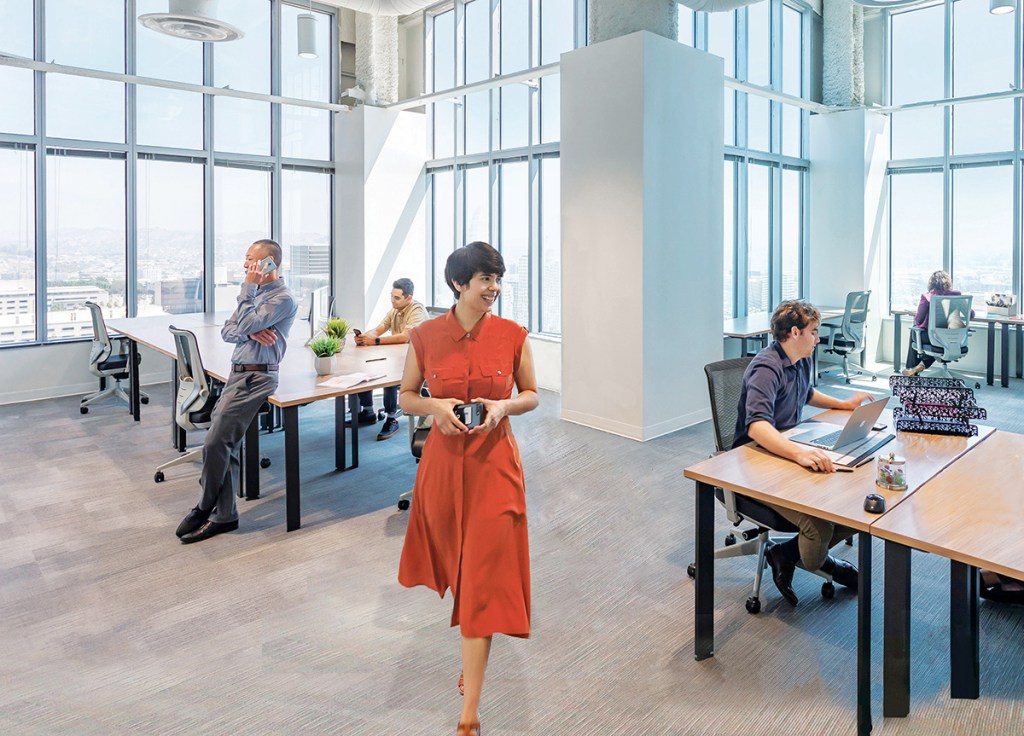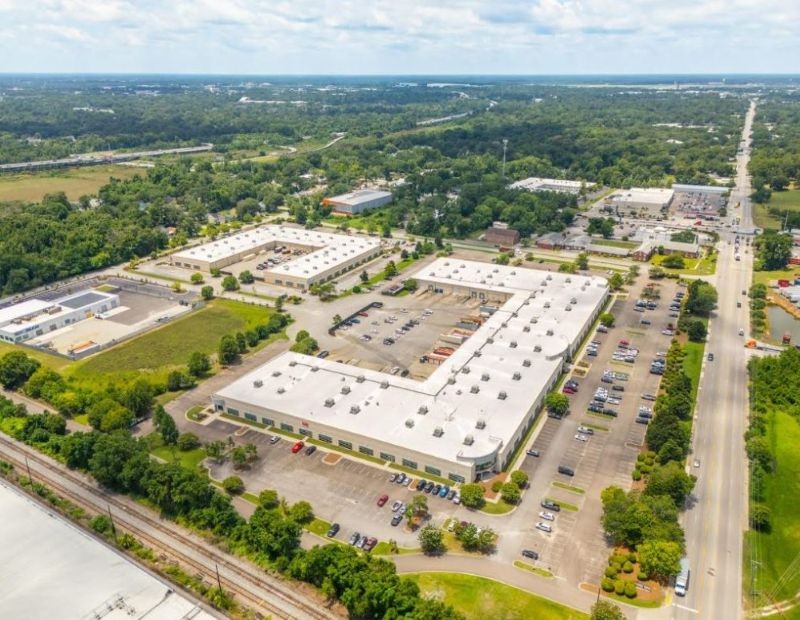Coworking’s the New Satellite Office
Enterprise companies grow without long-term lease commitments.

The term “coworking” may suggest images of scattered freelancers and wide-eyed startups looking for a place to work for a day, a week or a month at a time. But coworking has quietly become a powerful solution for large companies wanting to acquire office space without the commitments and long-term costs of a traditional lease.
Increased adoption of coworking by corporations helped the number of locations grow 25 percent year-over-year at the end of February, according to the March 2025 Office Market Report from CommercialEdge. Meanwhile, the square footage coworking spaces occupy climbed by 15 percent, and coworking as a percentage of total office space expanded to 2 percent, up 30 basis points.
Currently, commercial property owners and corporate users are facing a higher cost of capital and a slowdown in the development of new office space. At the same time, some corporations may be hesitant about investing in new office spaces or signing long-term leases.
Plus, a growing number of property owners are partnering with coworking companies that target corporate clients in order to help generate revenue and develop relationships with future long-term tenants.
Not just for startups
Corporations have come to appreciate the attributes of co-working that solo entrepreneurs and start-ups have enjoyed: agility, cost-effectiveness and on-demand access to new markets. Co-working companies that offer enterprise-level services are able to tap into a more stable and financially secure client base.

“Enterprise companies increasingly seek coworking spaces for the flexibility needed to navigate modern challenges like fluctuating headcounts and economic uncertainty, making adaptable workspaces a crucial and growing component of their portfolio,” said Luke Robinson, senior vice president & regional president for North America at WeWork.
Over 4,000 large companies across various industries, including 40 of the Fortune 100, utilize WeWork for their workspace needs, according to Robinson.
Within a 30,000-square-foot space, there may be a 10,000-square-foot enterprise suite for a single corporate occupier. In addition to providing a dedicated space, coworking companies can ensure that the tech, branding and services meet the standards of the parent company. The remainder of the coworking space will likely be filled by a combination of smaller offices and open workspaces.
Enterprise companies increasingly seek coworking spaces for the flexibility needed to navigate modern challenges like fluctuating headcounts and economic uncertainty.
—Luke Robinson, Senior Vice President & Regional President for North America, WeWork
Enterprise-level clients, however, tend to get better pricing than smaller users, as well as custom layouts, brand control and customized agreements.
Savills recommends coworking to corporate tenants as a strategic tool. “(It’s) not a replacement for traditional leases but a supplement,” said Vice Chairman Gabe Marans. “It’s a flexible, fast-to-execute option for short-term or overflow needs. It’s also a fantastic option to set up new offices quickly, particularly in new office locations.”
While coworking usually costs more per seat than traditional leases, the higher costs are balanced out by lowering the upfront expenditures for build-out and furniture that may come with a long-term traditional lease, noted Marans.

A multi-city approach
Flexibility is not the only need that coworking can fulfill for today’s corporations. CommercialEdge also highlighted a trend in which corporations are moving away from having all their human and real estate resources in major cities. This redistribution of the workforce has required companies to adapt to find space for their teams in a wider range of communities than ever before.

To manage this shift toward smaller regional offices for smaller teams, companies are turning to coworking and, as a result, coworking companies have seen a decrease in square footage in larger cities and business districts and an increase in smaller cities and suburban areas. Multi-city relationships provide a single point of contact who can help coordinate efforts to find space for teams in multiple locations.
“It’s easy to confuse large companies with large teams,” said Liz Simon, COO of Industrious. “Some of the largest companies in the world have teams of 20 people that cowork in places where they don’t have big footprints. They correlate to the long tail of small offices where they’re either testing a market or determining whether to invest in long-term infrastructure.”
Some of the largest companies in the world have teams of 20 people that cowork in places where they don’t have big footprints.
—Liz Simon, COO, Industrious
For some corporations, coworking companies are providing facilities management. Recently, CBRE enlisted its coworking partner Industrious to manage the design, build-out, operations and experience at its global financial headquarters at Lever House in New York City. Industrious will also operate an adjacent coworking space.
Industrious is also setting up spaces for JP Morgan, Uber, Google and others in less likely locations, such as Minnesota and Utah. Meanwhile, Compass Realty partnered with Serendipity Labs to set up enterprise workspaces in locations ranging from Overland Park, Kan., to Rye, N.Y.

A personal touch

Having a single point of contact does more than allow corporations to acquire space across multiple cities. It also allows for standardization of operations and ensures that remote locations meet all the necessary tech and service requirements, including everything from a customized event space to highly ergonomic furniture. This helps inspire confidence for both the client and their on-site employees.
In addition, working with an experienced point of contact can also help corporations understand what they really need rather than what they think they need.
“While a customer may come in and say they need 75 desks and two full-time conference rooms, after consulting with them and understanding how … often their employees will be on-site, that may result in determining they only need meeting rooms for 20 hours a month, which might be more cost effective,” explained John Arenas, CEO of Serendipity Labs.
Once the enterprise-level space has been occupied, coworking companies can also offer real-time workspace booking and usage insights, allowing corporations to make data-driven decisions about their real estate strategy.
Creating communities
While remote work spiked during the pandemic, businesses are beginning to re-prioritize in-person collaboration, productivity and company culture. However, not all employees will want to return to pre-COVID office policies entirely.
Coworking can help corporations adapt to changes in how people work and accommodate diverse work styles, whether remote, hybrid or full-time in-office. This can help employees maintain a work-life balance and spend more time in their communities while staying connected to an office. It also allows them to collaborate and connect with coworkers without losing all the benefits of working from home.








You must be logged in to post a comment.